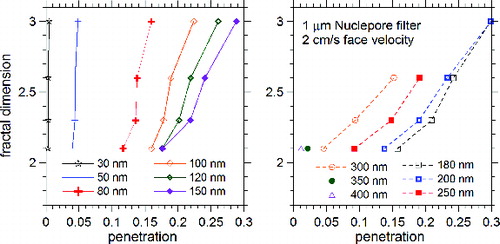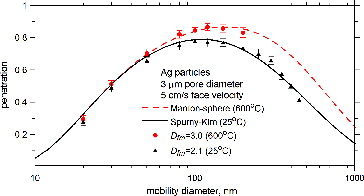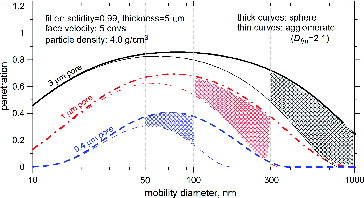Figures & data
FIG. 1. SEM image of the 1 μm pore diameter Nuclepore filter with 350 nm mobility diameter Ag agglomerates deposited.
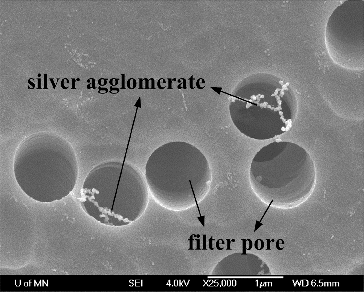
FIG. 2. Comparison of Nuclepore filter penetrations among NaCl, soot agglomerates, and silver agglomerates at 5 cm s−1 face velocity. The zoom-in images of soot and silver agglomerates are also shown.
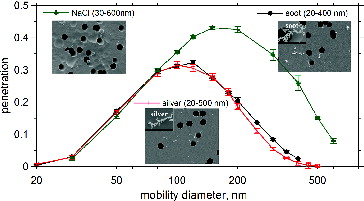
FIG. 3. Penetration of Ag particles with different mass-mobility fractal dimensions. Manton model and Spurny-Kim model were in good agreement with data of Dfm = 3.0 and Dfm = 2.1, respectively. Penetrations for Ag particles with Dfm = 2.1, 2.2, 2.6, 2.9, and 3.0 are distinguishable.
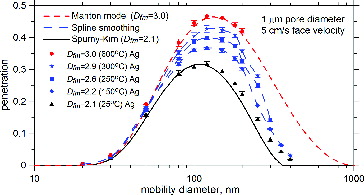
FIG. 4. Comparison of experimental and theoretical penetrations at a lower face velocity of 2 cm s−1 for Ag particles with four different mass-mobility fractal dimensions. The model predicted the penetrations of three Ag particles with Dfm = 2.1, 2.3, and 3.0 very well.
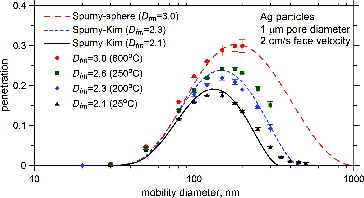
FIG. 5. Relationship between the mobility diameter and effective length for Ag particles with different mass-mobility fractal dimensions.
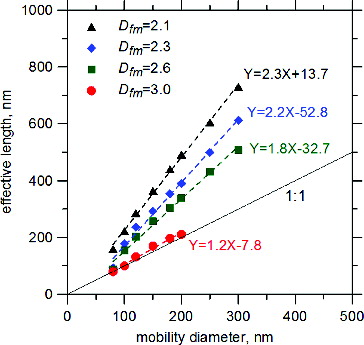
FIG. 6. Mass-mobility fractal dimension as a function of penetration of fractal Ag particles with mobility diameters of 30–150 nm (left) and 180–400 nm (right).
